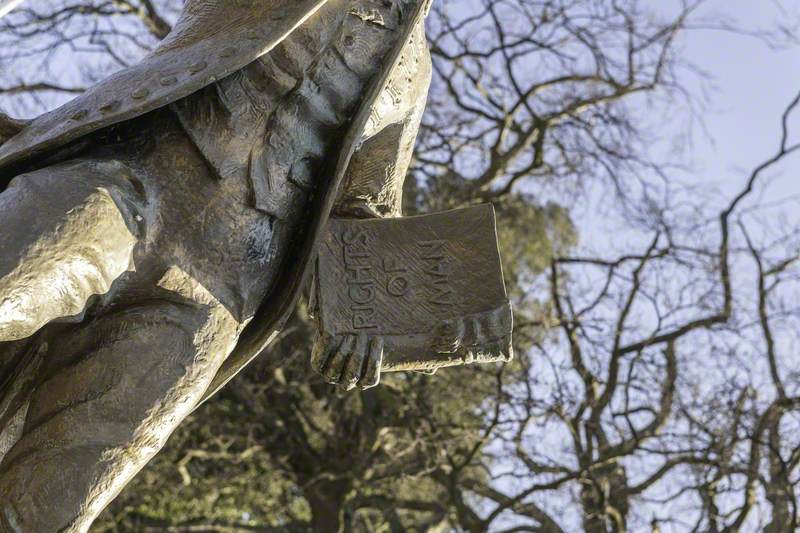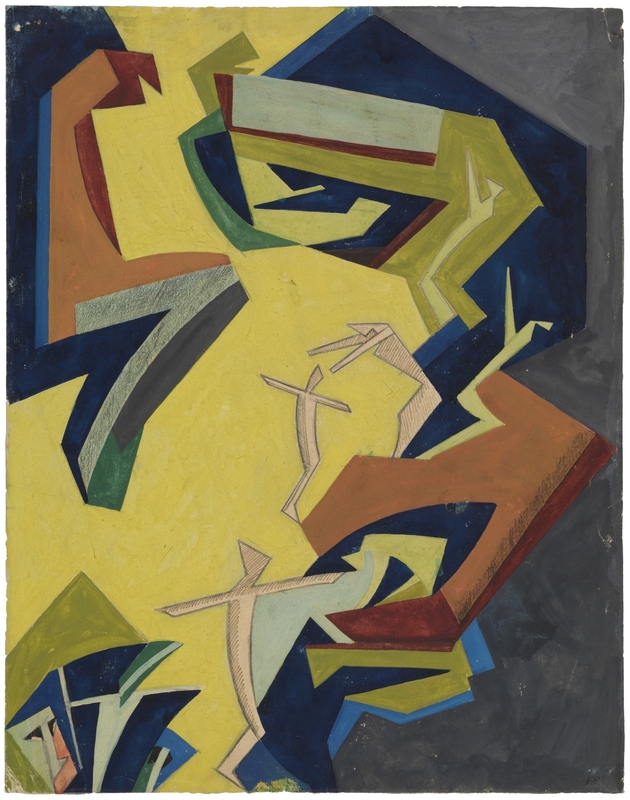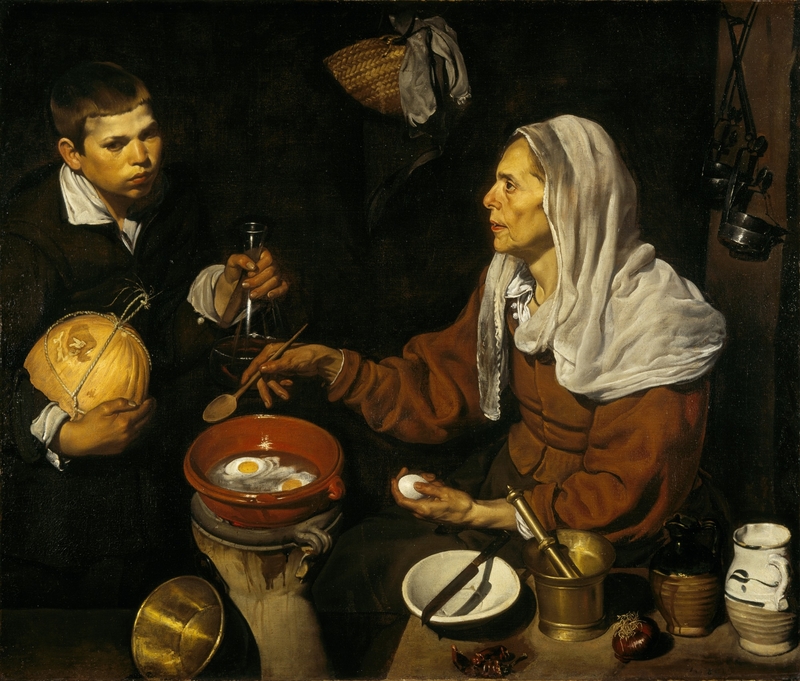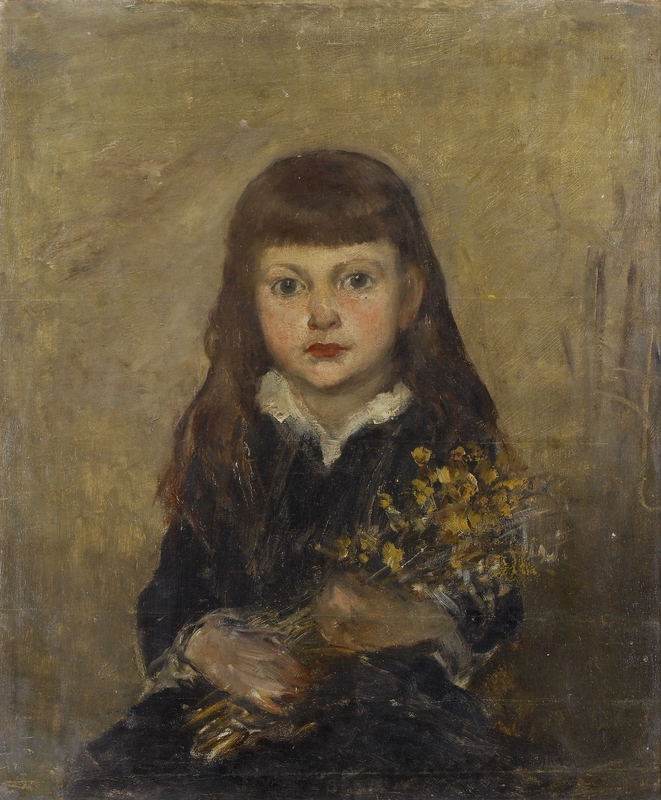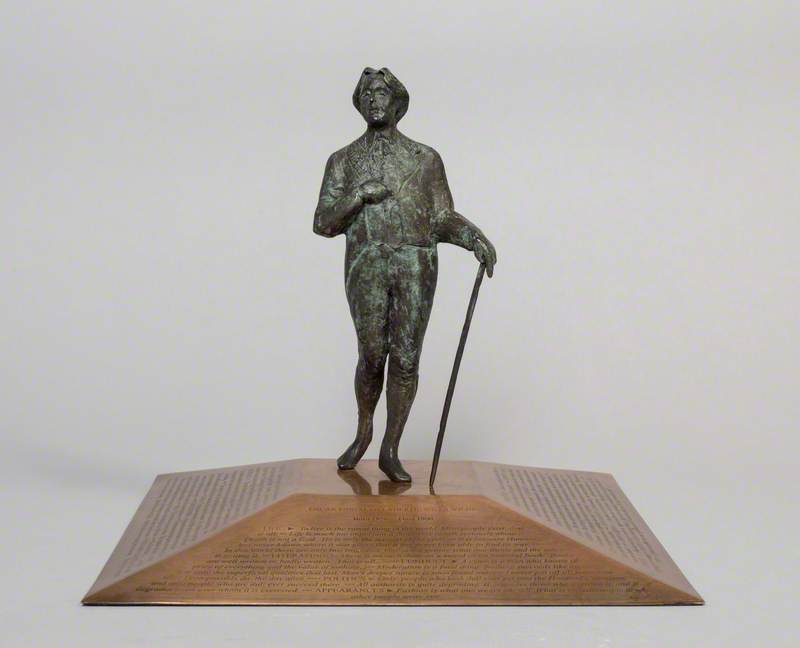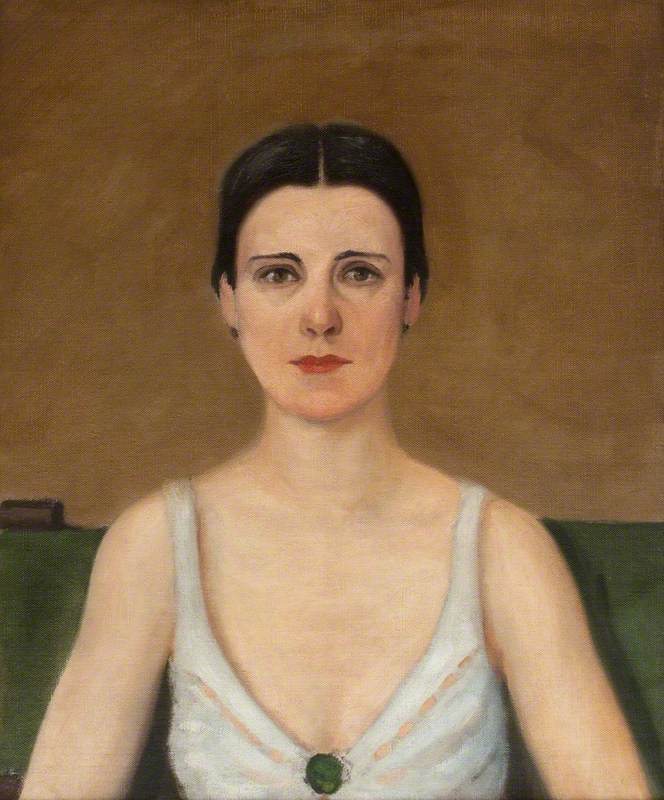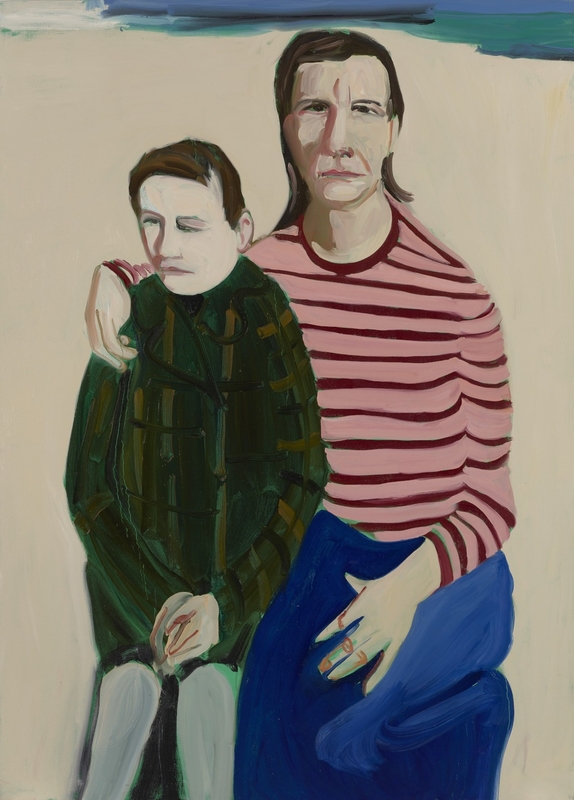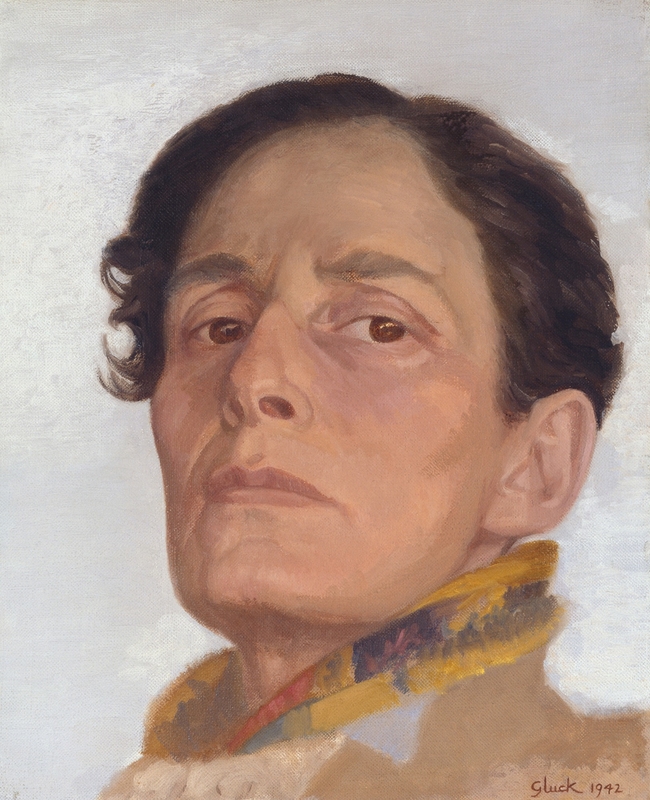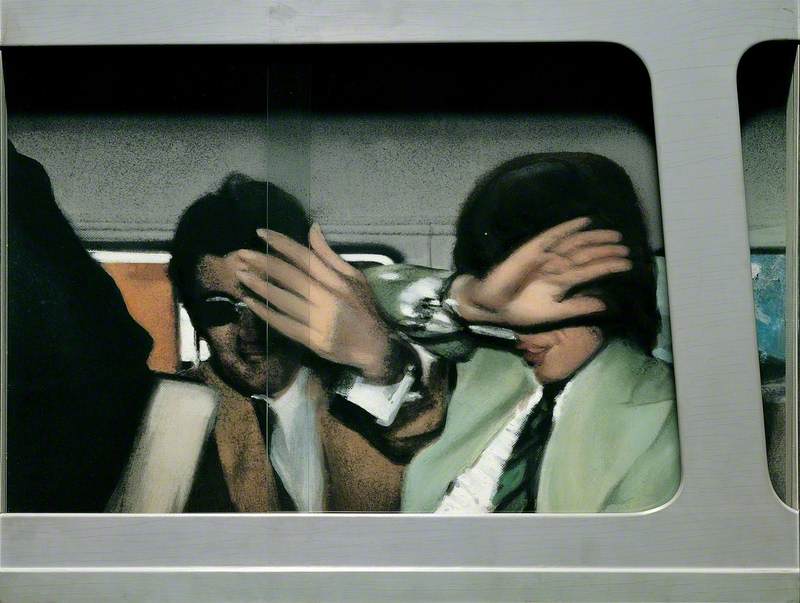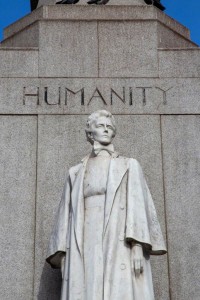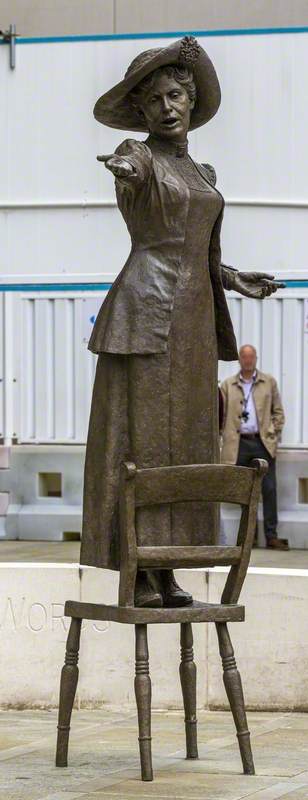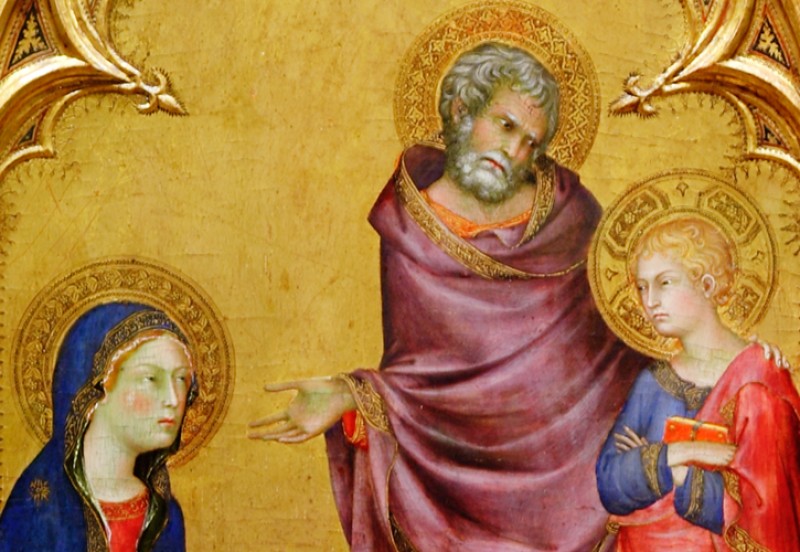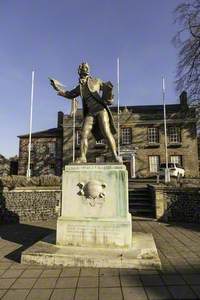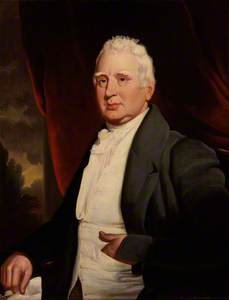Thomas Paine was born in Thetford, Norfolk, on 29th January 1737. A complex and controversial character, he was a writer and political activist who was influential in both the American War of Independence and the French Revolution.
An inscription on the plinth describes him as an 'Englishman by birth; French citizen by decree; American by adoption.' The statue, by Charles Thomas Wheeler (1892–1974), was unveiled on 7th June 1964, gifted to the town of Thetford by the Thomas Paine Foundation in New York.
The gilded bronze figure stands in a dramatic pose on top of a large plinth. In his outstretched right hand, he holds a quill pen, and in his left, he holds a copy of Rights of Man (conspicuously upside down).
Paine sailed to America in 1774 with a letter of introduction from Benjamin Franklin. He published essays condemning slavery and criticising British colonial policy and in 1776, wrote the widely distributed pamphlet Common Sense, supporting the case for American independence, which led to his being hailed as a patriot by the Americans, and as a traitor by the British. It has even been suggested that he played a part in the writing of the Declaration of Independence. President Obama quoted Paine in his 2009 inauguration speech.
After moving to France, Paine published Rights of Man (1791–1792), a controversial treatise supporting the French Revolution, and probably his most famous work. He was involved in the trial of Louis XVI but later fell out of favour with the revolutionary government, and was imprisoned himself, only escaping execution by chance. Released in 1794, he returned to America in 1802 but received a hostile reception there, primarily because of his publication Age of Reason (1794–1807) which attacked Christianity and other formal religions.
Paine died in New York on 8th June 1809. In a macabre twist to his story, his bones were exhumed and stolen in 1819 by the radical journalist and politician William Cobbett, who wanted them reburied in England with a fitting memorial. Cobbett had them in his possession until his death in 1835, but then they disappeared. All over the world, there are those who claim to possess parts of the skeleton, including one suggestion that some of the bones were made into buttons!
Paine is also remembered in Lewes, East Sussex, where he lived for six years; the town boasts a striking portrait sculpture of him by Marcus Cornish.
Dr Anthony McIntosh, former Public Sculpture Manager at Art UK

